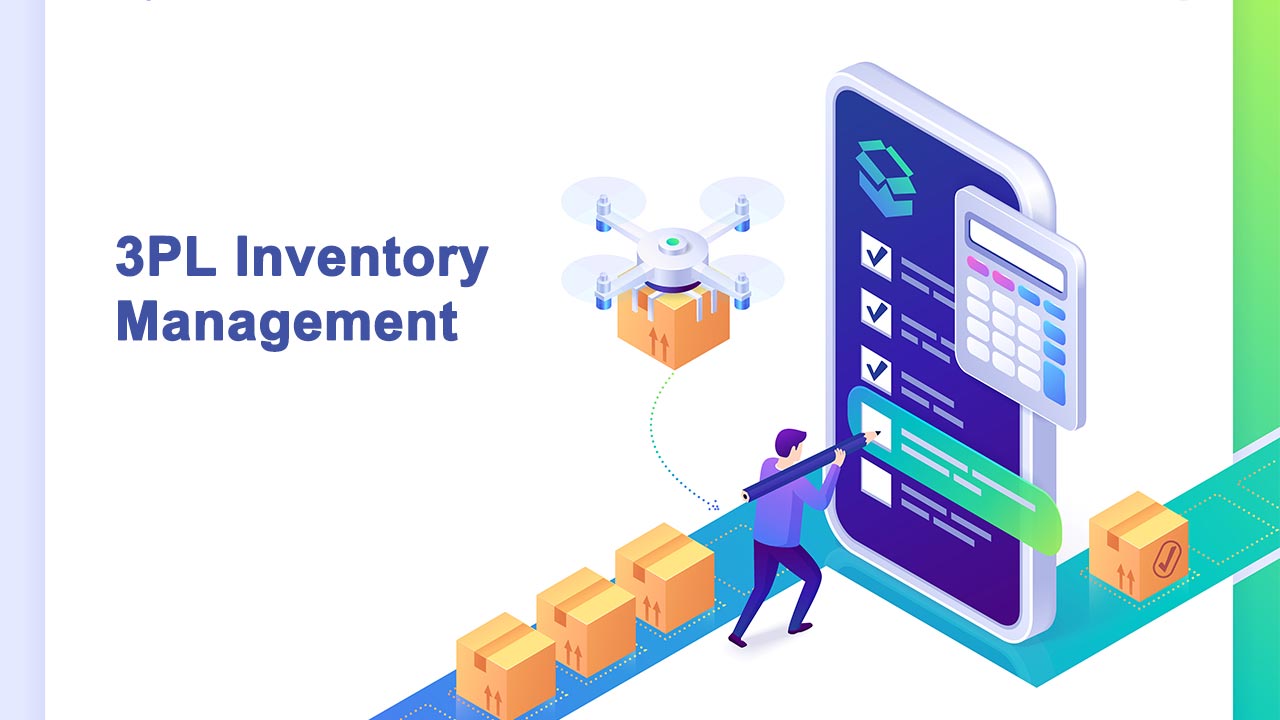In today’s fast-paced eCommerce landscape, effective inventory management is a critical component of success for businesses of all sizes. As companies increasingly turn to third-party logistics (3PL) providers to handle their warehousing and distribution needs, the necessity for robust 3PL inventory management software becomes more apparent. In this comprehensive guide, we will delve into the intricacies of 3PL inventory management software, exploring its features, benefits, challenges, and how it can revolutionize your supply chain operations.
Table of Contents
- Introduction to 3PL Inventory Management Software
- Key Features of 3PL Inventory Management Software
- Benefits of Using 3PL Inventory Management Software
- Challenges in Implementing 3PL Inventory Management Software
- How to Choose the Right 3PL Inventory Management Software
- Case Studies: Successful Implementation of 3PL Inventory Management Software
- Conclusion
1. Introduction to 3PL Inventory Management Software
3PL inventory management software is designed to facilitate the efficient handling of inventory within third-party logistics operations. These systems offer comprehensive solutions that allow businesses to track inventory levels, manage stock replenishment, process orders, and gain real-time visibility into their supply chain. With the growth of eCommerce, many businesses are outsourcing their logistics to 3PL providers, making the need for specialized software increasingly vital.The core function of 3PL inventory management software is to optimize inventory flow. This means ensuring that the right products are in the right place at the right time. By integrating seamlessly with eCommerce platforms, warehouse management systems (WMS), and enterprise resource planning (ERP) systems, 3PL inventory management software provides a centralized platform for all inventory-related activities.
2. Key Features of 3PL Inventory Management Software
When evaluating different 3PL inventory management software options, it’s essential to consider the key features that make these systems effective. Below are several critical features to look for:
- Real-Time Inventory Tracking: This feature allows businesses to monitor stock levels in real time, reducing the risk of stockouts and overstocks. By providing up-to-date information, companies can make informed decisions about inventory replenishment.
- Order Management: Efficient order management capabilities enable businesses to streamline order processing, from order creation to fulfillment. This includes automated order routing, picking, packing, and shipping.
- Reporting and Analytics: Comprehensive reporting tools provide insights into inventory performance, sales trends, and customer behavior. This data can be invaluable for making strategic decisions and improving overall efficiency.
- Integration Capabilities: The ability to integrate with existing systems such as eCommerce platforms, WMS, and ERP solutions is crucial for ensuring a seamless flow of information across the supply chain.
- Multi-Location Management: For businesses that operate in multiple warehouses or locations, the ability to manage inventory across different sites is essential. This feature allows for centralized control and visibility of inventory.
- Barcode Scanning and RFID: Implementing barcode scanning and RFID technology can greatly enhance inventory accuracy and speed up the receiving and shipping processes.
3. Benefits of Using 3PL Inventory Management Software
Implementing 3PL inventory management software can provide numerous benefits for businesses, enhancing their operations and increasing profitability. Here are some of the most significant advantages:
- Improved Efficiency: By automating inventory management tasks, businesses can save time and reduce labor costs. This leads to faster order processing and fulfillment, ultimately improving customer satisfaction.
- Enhanced Accuracy: With real-time data and automated tracking, the risk of human error is significantly reduced. Accurate inventory records allow businesses to make better decisions regarding stock levels and replenishment.
- Increased Visibility: 3PL inventory management software provides a centralized view of inventory levels across multiple locations. This visibility allows businesses to respond quickly to changes in demand and optimize their supply chain.
- Cost Savings: By preventing stockouts and overstocks, companies can reduce carrying costs and improve cash flow. Additionally, efficient order processing can lead to lower shipping costs and improved margins.
- Scalability: As your business grows, 3PL inventory management software can easily scale to accommodate increased inventory levels and order volumes. This flexibility is crucial for businesses looking to expand.
4. Challenges in Implementing 3PL Inventory Management Software
While the benefits of 3PL inventory management software are clear, businesses may face several challenges when implementing these systems. Understanding these challenges can help organizations prepare and overcome potential obstacles:
- Integration Difficulties: Integrating new software with existing systems can be complex and time-consuming. Businesses must ensure compatibility with their eCommerce platforms, WMS, and ERP systems.
- Training Requirements: Employees may require training to effectively use the new software. Companies need to allocate time and resources for training sessions to ensure a smooth transition.
- Cost Considerations: While 3PL inventory management software can lead to cost savings in the long run, the initial investment may be significant. Businesses must weigh the costs against the expected benefits.
- Data Migration: Transferring existing inventory data to the new system can be challenging. Businesses must carefully plan and execute data migration to avoid discrepancies and ensure data integrity.
5. How to Choose the Right 3PL Inventory Management Software
Choosing the right 3PL inventory management software is crucial for maximizing efficiency and achieving business goals. Here are some key considerations to keep in mind during the selection process:
- Identify Your Needs: Start by assessing your specific inventory management needs. Consider factors such as order volume, number of SKUs, and integration requirements with existing systems.
- Evaluate Features: Compare the features offered by different software solutions. Look for features that align with your business goals and operational needs.
- Consider Scalability: Choose software that can grow with your business. Scalability is essential for accommodating increased inventory levels and order volumes as your business expands.
- Review Vendor Support: Evaluate the level of customer support provided by the software vendor. Reliable support can be invaluable during the implementation process and beyond.
- Read User Reviews: Research user reviews and case studies to gain insights into the experiences of other businesses with the software. This can help you identify potential strengths and weaknesses.
6. Case Studies: Successful Implementation of 3PL Inventory Management Software
To illustrate the impact of 3PL inventory management software, let’s examine a few case studies of businesses that have successfully implemented these systems:
- Case Study 1: E-commerce Retailer
An online retailer specializing in fashion apparel faced challenges with inventory accuracy and order fulfillment. After implementing a 3PL inventory management software solution, they achieved a 30% reduction in order processing time and improved inventory accuracy to 99%. The software’s real-time tracking capabilities allowed them to respond quickly to trends, resulting in a 20% increase in sales. - Case Study 2: Electronics Distributor
A distributor of electronics products struggled with managing inventory across multiple warehouses. By adopting a 3PL inventory management software, they gained centralized visibility of inventory levels and improved their replenishment process. This led to a 25% decrease in carrying costs and a 15% improvement in order fulfillment rates. - Case Study 3: Food and Beverage Company
A food and beverage company needed to comply with strict regulatory standards related to inventory tracking. Implementing 3PL inventory management software enabled them to maintain accurate records and ensure compliance. As a result, they reduced waste by 40% and improved overall operational efficiency.
7. Conclusion
In conclusion, 3PL inventory management software is an essential tool for businesses looking to streamline their supply chain operations and enhance inventory management. With features such as real-time tracking, order management, and robust reporting capabilities, these software solutions enable companies to improve efficiency, accuracy, and visibility across their operations. By understanding the benefits, challenges, and considerations involved in choosing the right software, businesses can make informed decisions that align with their goals.As eCommerce continues to evolve, the importance of effective inventory management will only grow. Investing in a reliable 3PL inventory management software solution can position your business for success, allowing you to navigate the complexities of modern supply chains with confidence.
This comprehensive guide serves as a valuable resource for anyone looking to understand the intricacies of 3PL inventory management software and its impact on supply chain efficiency. Whether you are a small business owner or a logistics manager, the insights provided here can help you make informed decisions that drive your business forward.



